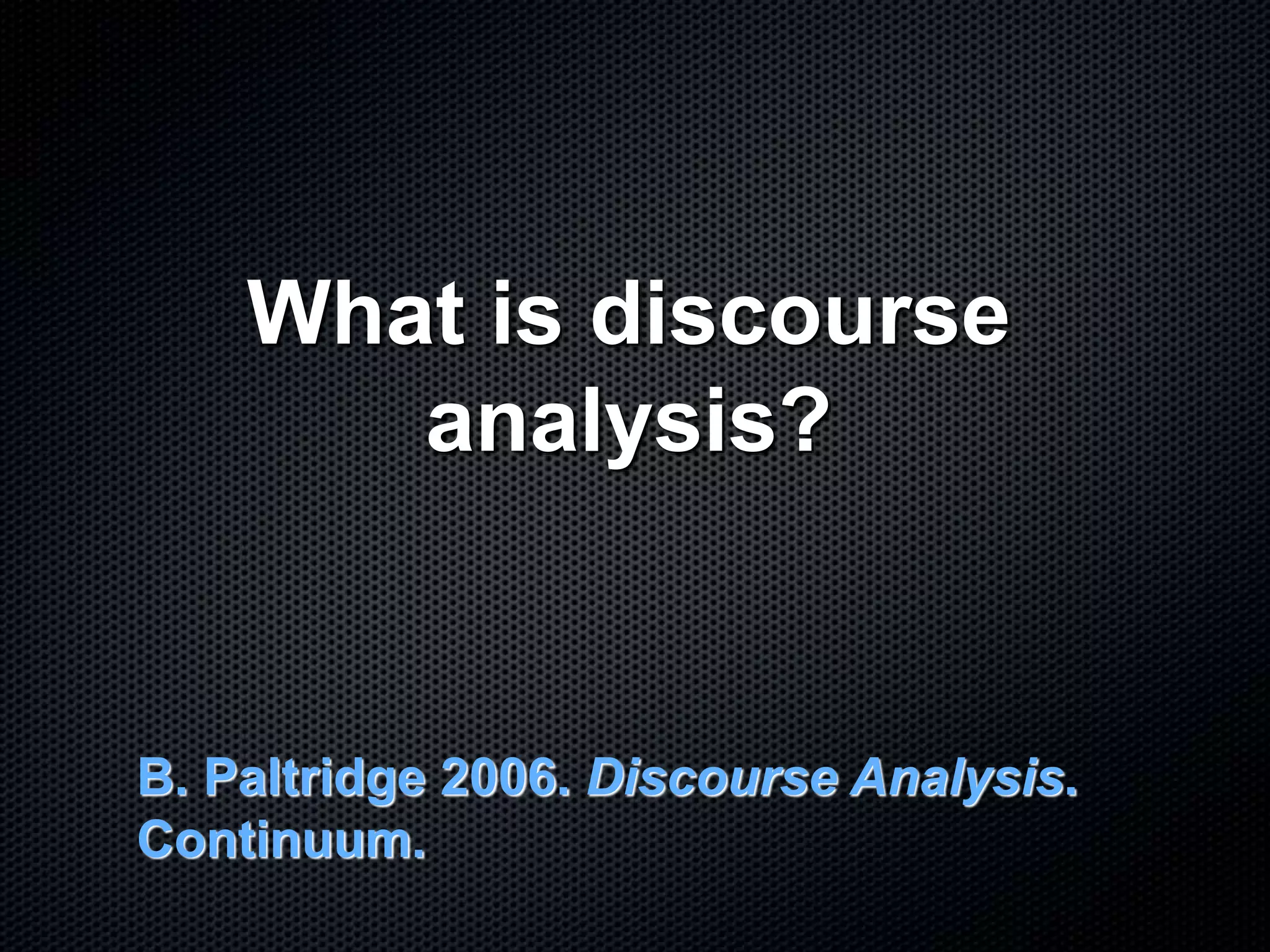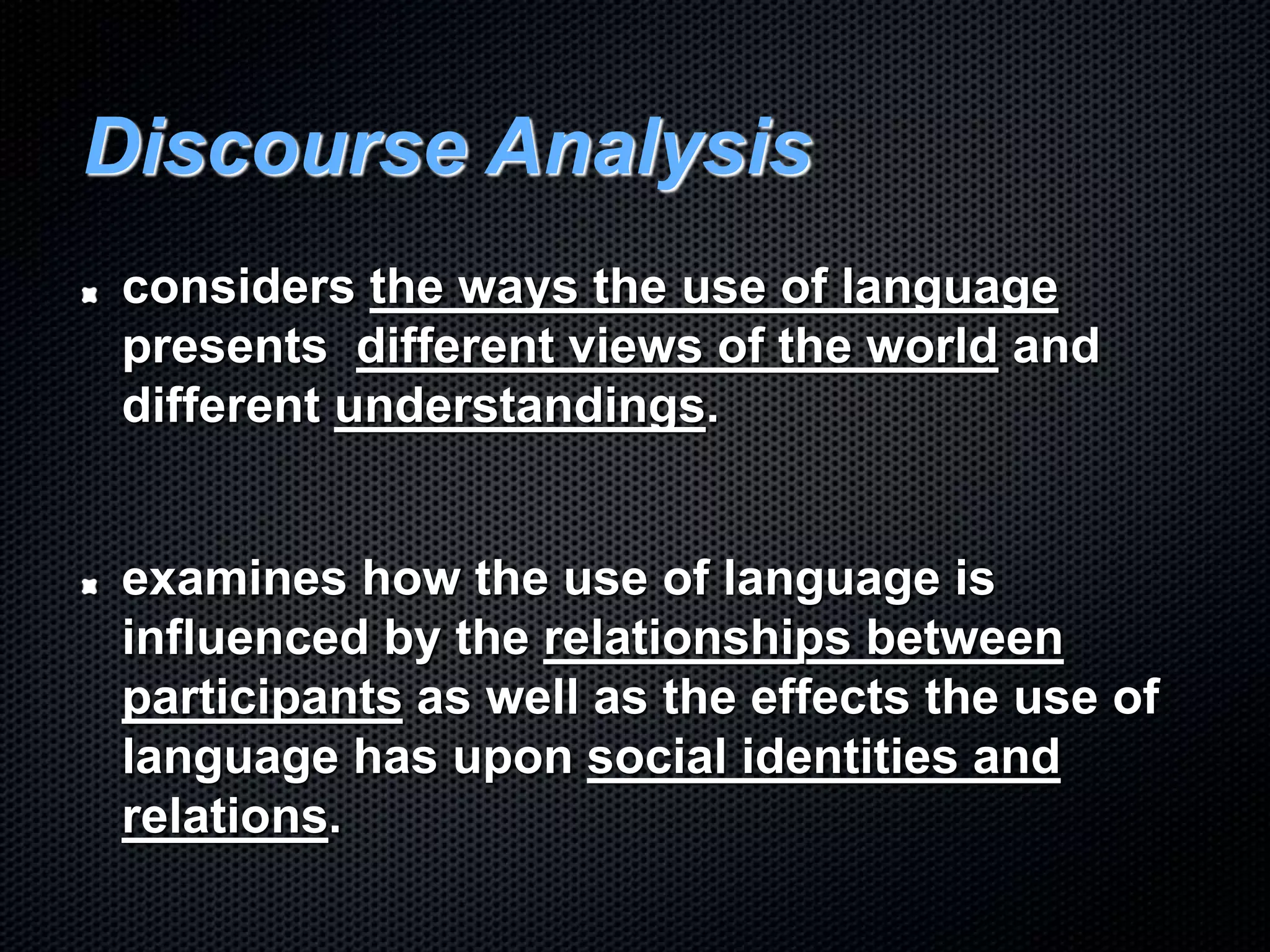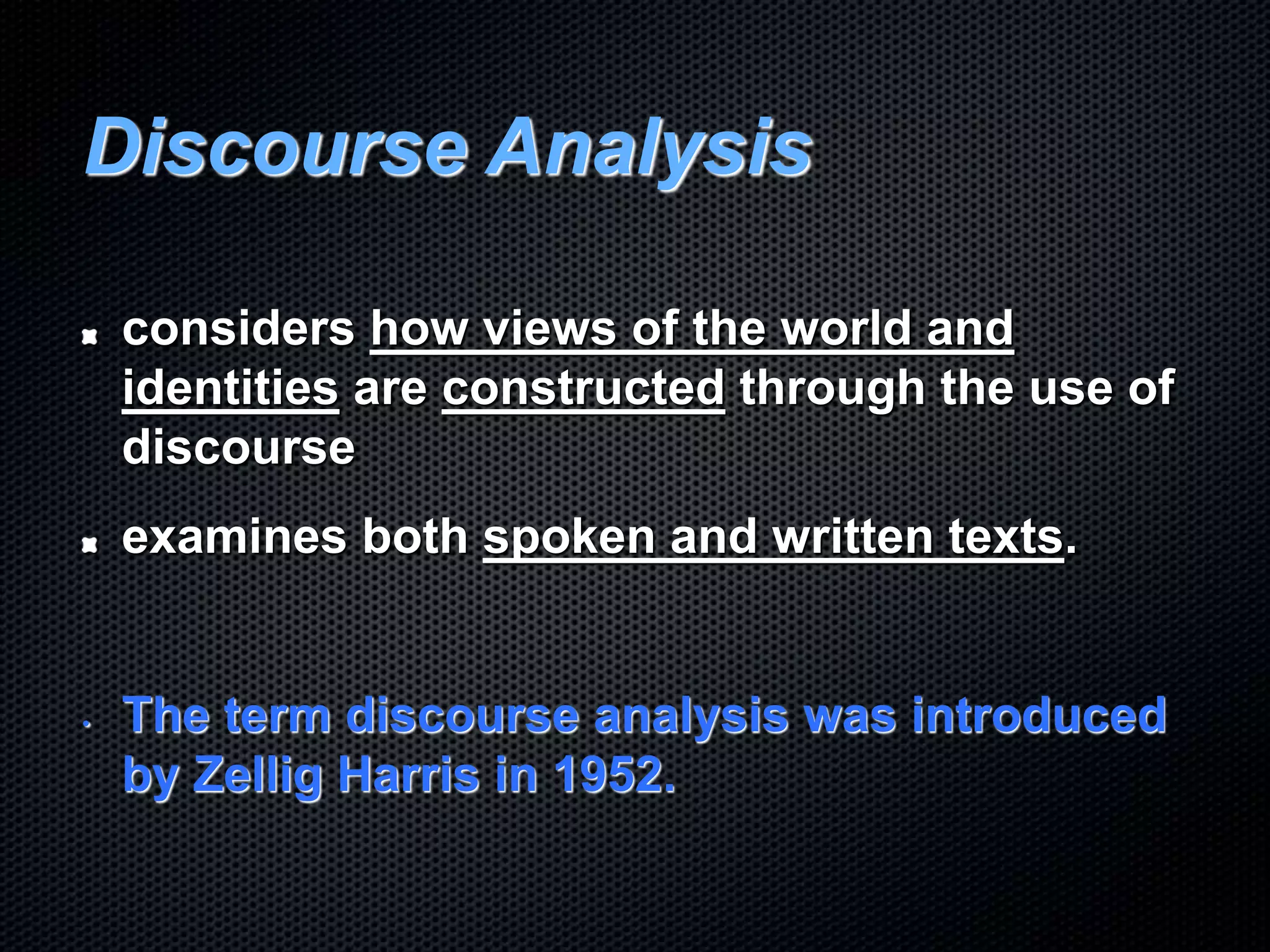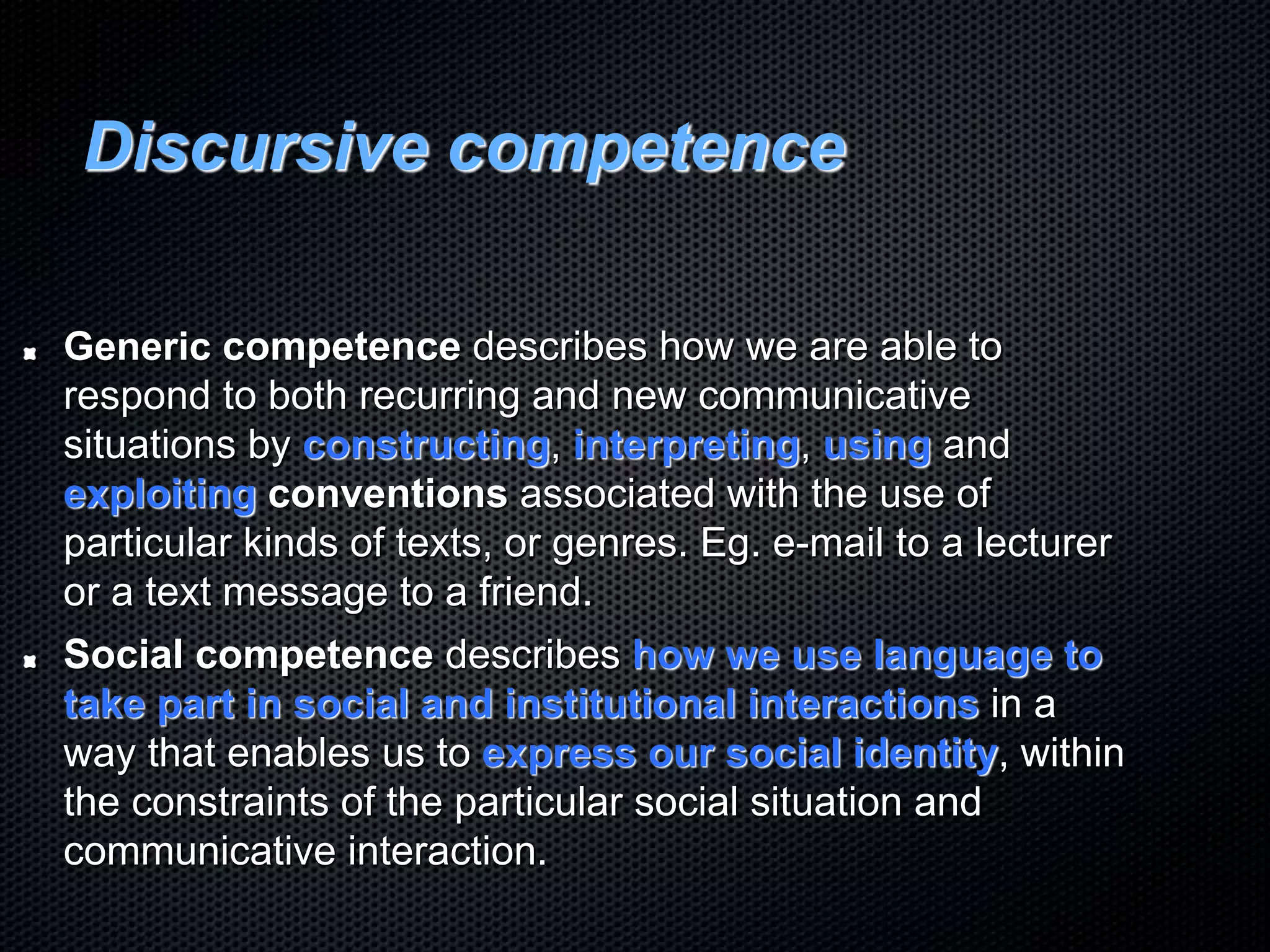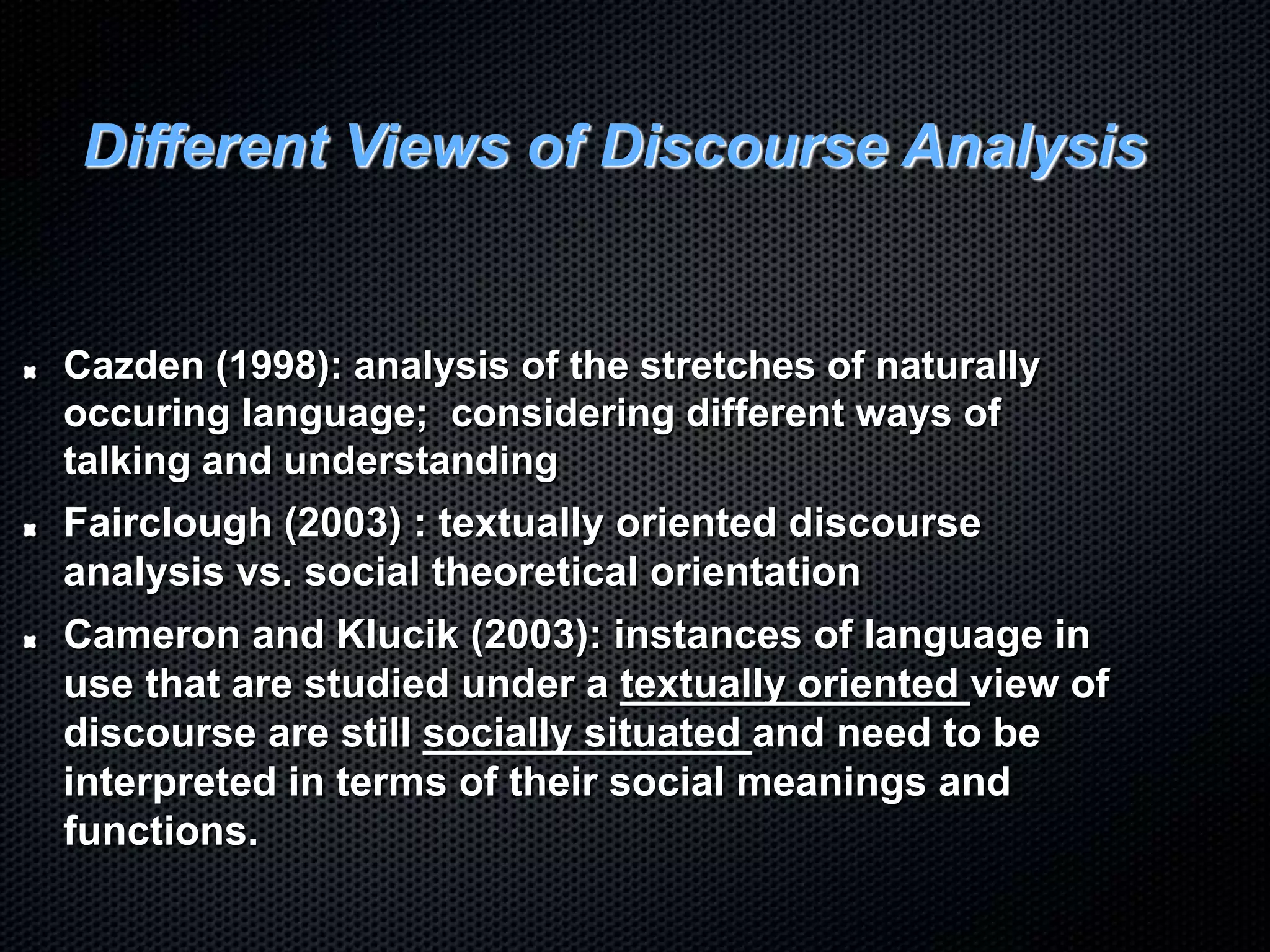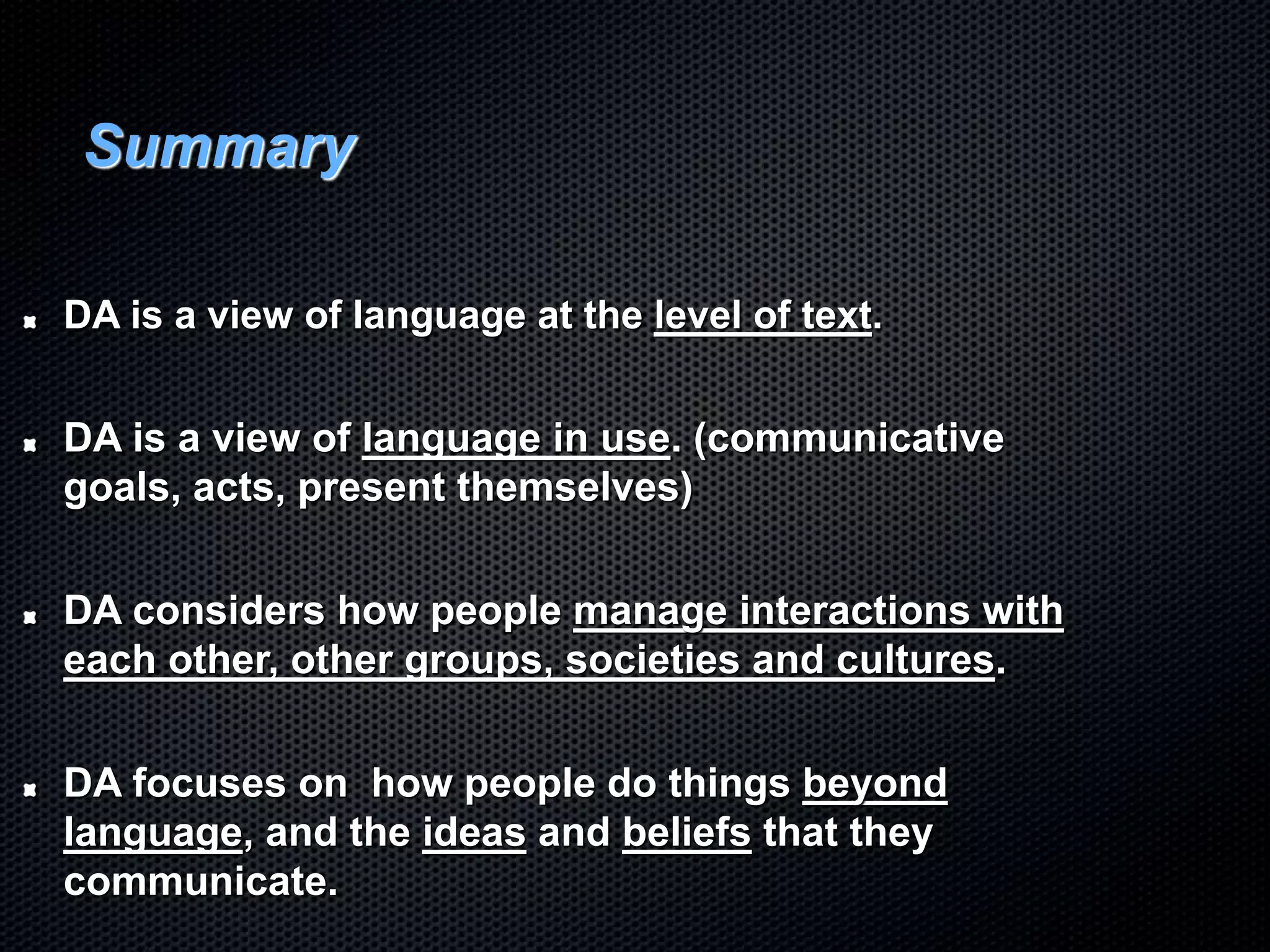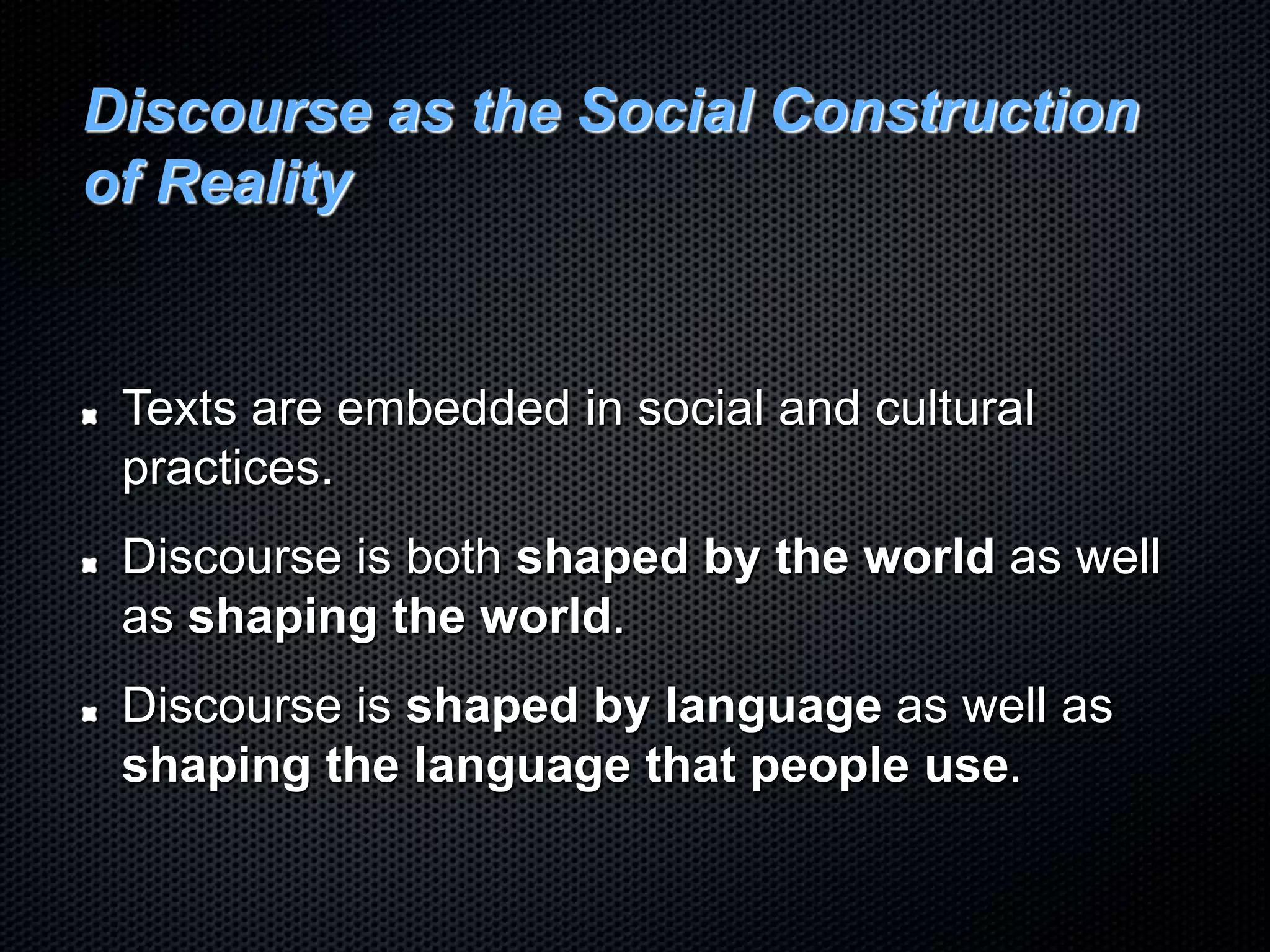Discourse analysis focuses on language use beyond words and sentences. It looks at patterns of language across texts and the relationship between language and its social/cultural context. Discourse analysis considers how language presents different views of the world and identities, and how language use is influenced by relationships between participants and affects social identities. It examines both spoken and written texts.
